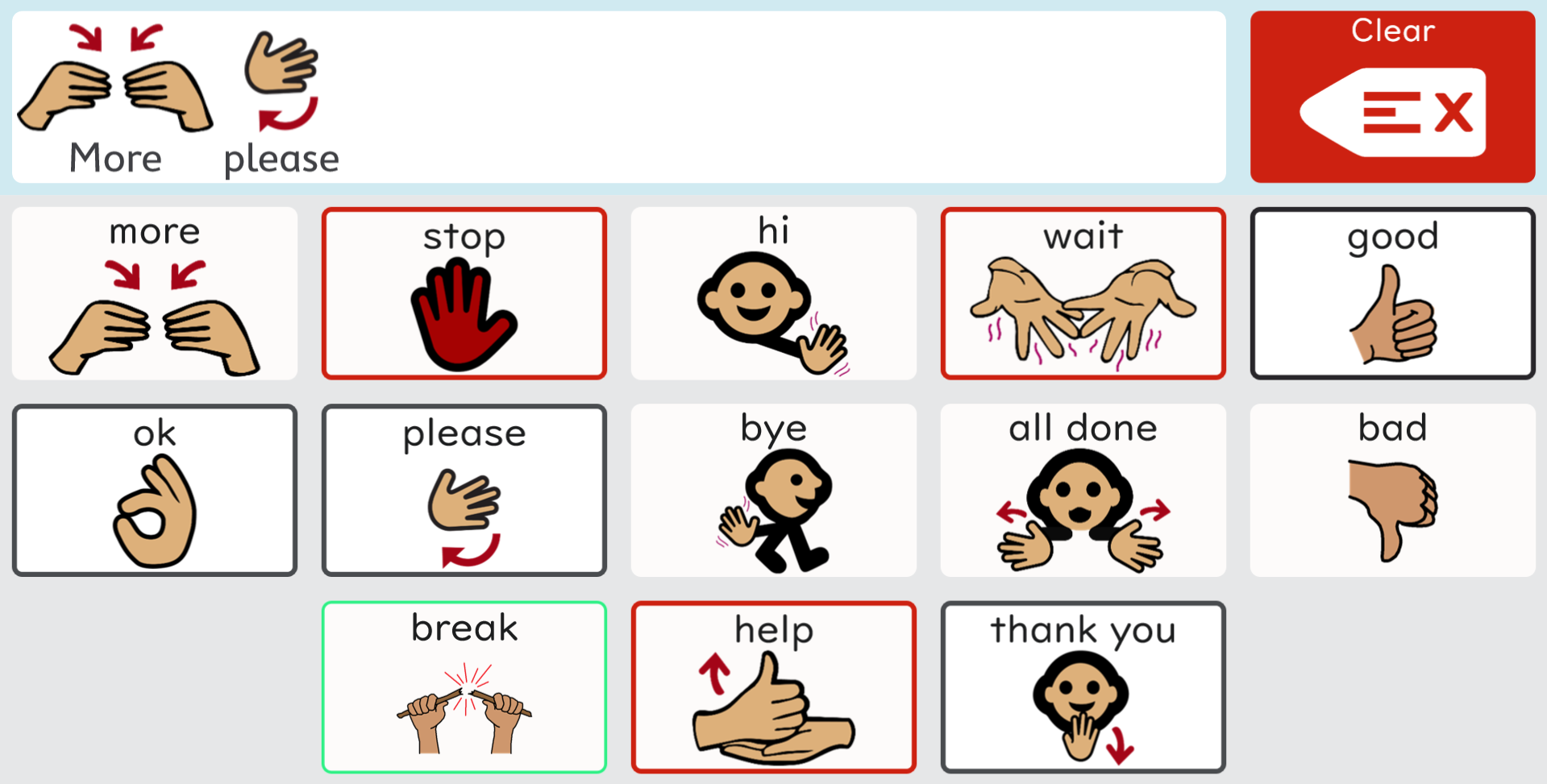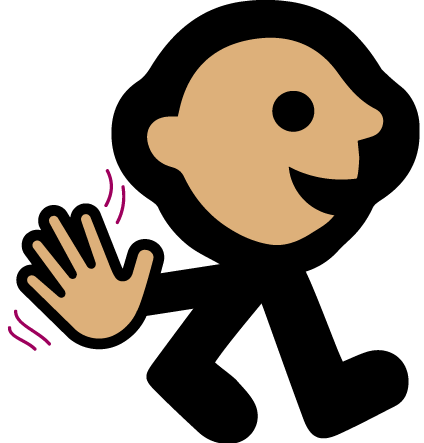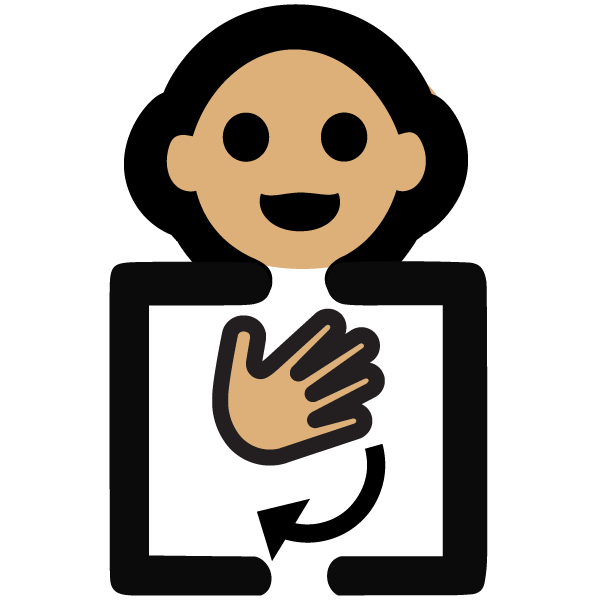The importance of using physical signs with language for AAC dependent children.
Signs and AAC
the importance of signing
There are many different types of kids using AAC devices. For those who auditory processing issues like my daughter TT, the device is more than just a way to express their own speech. It becomes a means of better understanding the world around them. A world that must seem downright confusing and even unintelligible at times. In her incredible book The Autistic Brain , Temple Grandin talks about how she couldn't even hear certain consonants as a small child.
I often think that my daughter TT has a similar situation. We know she hears at a relatively regular volume, but we have no idea what she hears. I've often thought that she is like a little detective, looking at the visual world to figure out clues to help her understand the audio better.

For us, it isn't that important that the signs be exactly in line with the ASL (American Sign Language) signs. What is key is that TT herself both understands, and uses, these signs. Two of the first signs we began using were "help" and "wait". It's amazing how patient TT can be when she fully understands that "wait" is necessary. While she rarely initiates the sign, she responds to it, and will make the sign herself in response to your own.
A few weeks ago I saw just how signing can change things for her. Her older brother Nicolas has become increasingly involved with caring for his sister, and particularly loves doing horse play with her. Running around, hiding, some wrestling, etc. Typical fun kid play, boy style! But I noticed that when he didn't want her to do something, he was giving her sort of harsh verbal commands. "NO TT! Don't do that!" I noticed that it would take him several times saying this, increasingly louder each time, to get his message across. Seemed to me there had to be a better way.
So I asked Nicolas to try using hand signals FIRST, then quietly but firmly saying "No" when he wanted her to stop doing something. We use the thumbs down to indicate NO, and this is a sign TT does use regularly.
So he tried it. With some gentle reminding, he got to where he would use the hand signals for NO and YES where appropriate, coupled with gentle auditory prompts. He was quite amazed to see that her behavior improved, and his own anxiousness at keeping her in line also began to go down.
For us the bottom line is that yelling out her name and "NO!!" is much more of a last resort that is often ineffective, especially if used in non critical situations. For us, the hand signals make a big difference.
There is research suggesting that children who use physical signing alongside their AAC have better success with literacy. That is huge! Given the poor prognosis many AAC dependent children face with meaningful literacy, which as many as 90% do not acheive - any leg up on moving from symbols to words is a big deal. I'll look at that more in depth with links to research in a later post.
Reasons to Sign:
- Multi modal communication helps comprehension
- The child can demonstrate that they've understood
- Using an AAC device is not practical 100% of the time
- Offers an alternative to purely auditory input (speech)
- Allows the child to be ACTIVE in their communication
Downloadable Graphics
Right click and select "Save Image As" to download any image below. To download a zip file of these images, click here. Copyright © Stacey Reiman 2019, free for non-commercial use.









